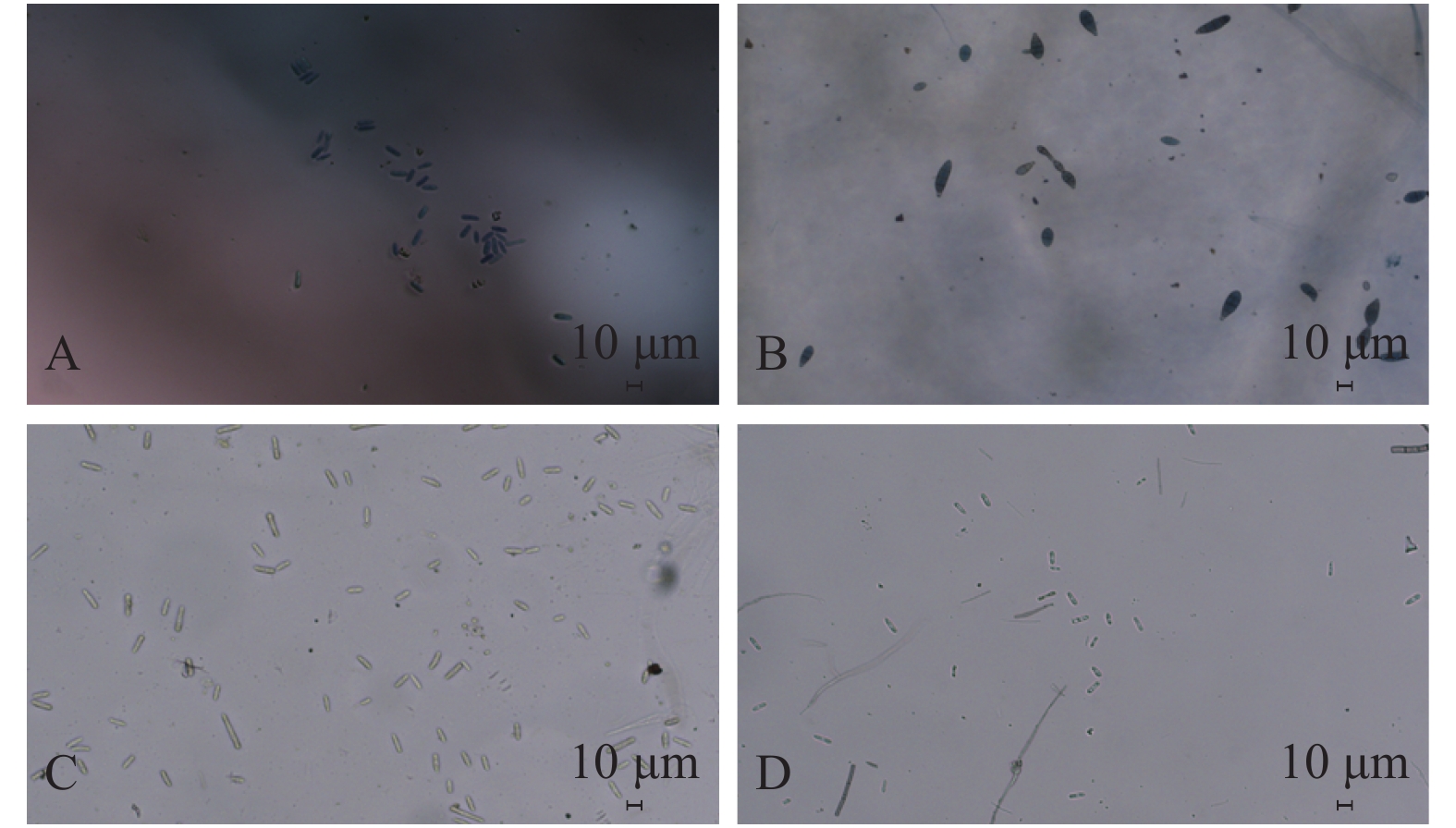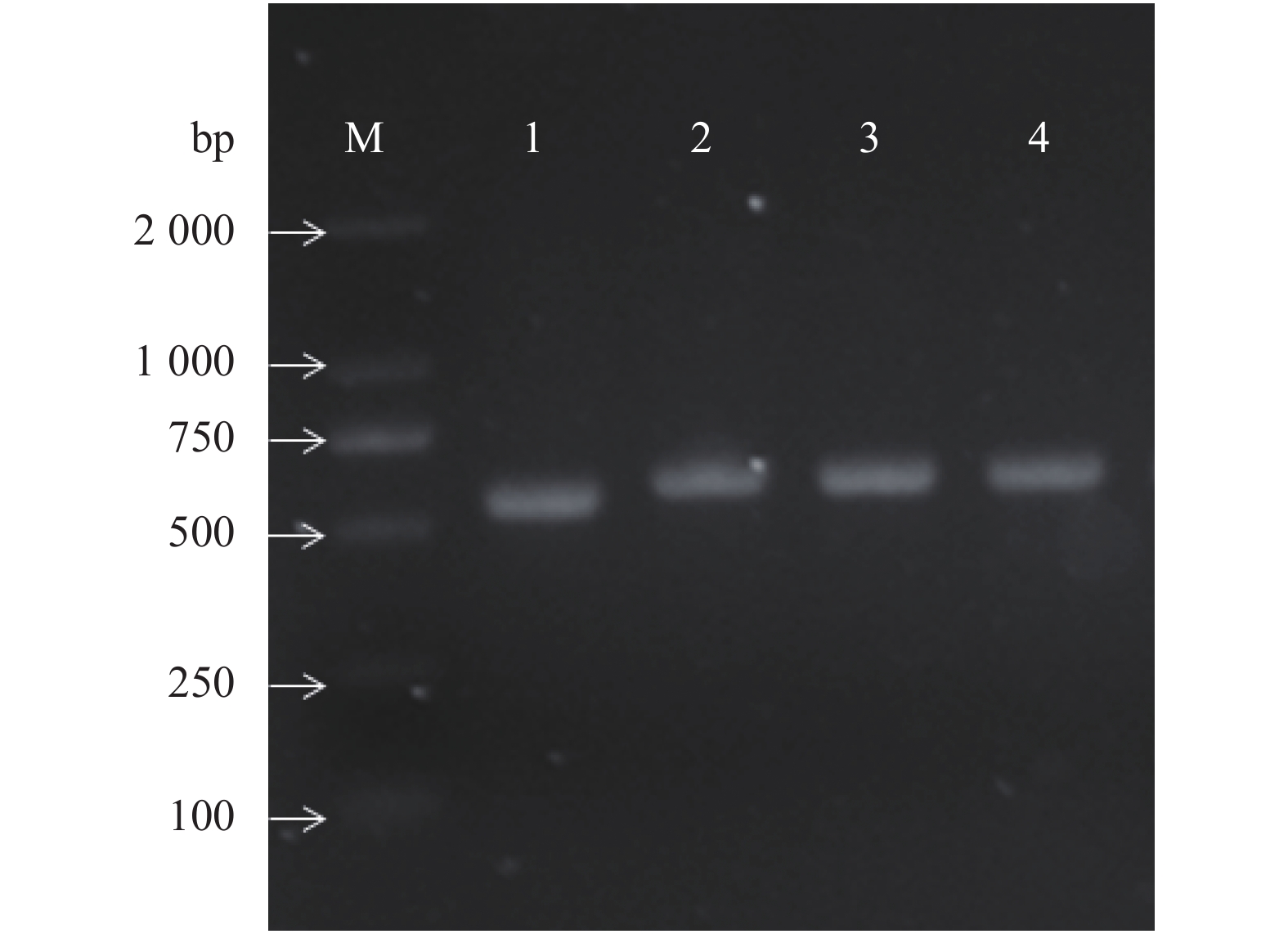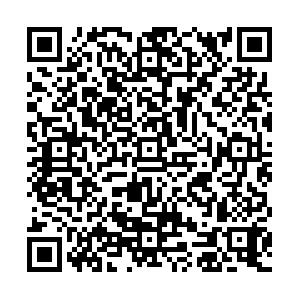|
[1]
|
韩帅, 张河庆, 吴婕, 等. 四川省山药黑斑病病原菌的鉴定 [J]. 植物保护, 2019, 45(2):68−74.HAN S, ZHANG H Q, WU J, et al. Identification of the pathogen causing black rot of yam in Sichuan Province [J]. Plant Protection, 2019, 45(2): 68−74.(in Chinese)
|
|
[2]
|
廖朝晖, 朱必凤, 刘安玲, 等. 山药主要生化成分含量的测定 [J]. 韶关学院学报, 2003, 24(6):67−69. doi: 10.3969/j.issn.1007-5348.2003.06.018LIAO Z H, ZHU B F, LIU A L, et al. Analysis of major biochemical components in Chinese yam [J]. Journal of Shaoguan University, 2003, 24(6): 67−69.(in Chinese) doi: 10.3969/j.issn.1007-5348.2003.06.018
|
|
[3]
|
覃维治, 黄报应, 黄开航, 等. 桂南地区淮山药炭疽病发生规律及防治技术研究 [J]. 河南农业科学, 2015, 44(7):94−98.QIN W Z, HUANG B Y, HUANG K H, et al. Occurrence regularity and control techniques of yam anthracnose in southern Guangxi [J]. Journal of Henan Agricultural Sciences, 2015, 44(7): 94−98.(in Chinese)
|
|
[4]
|
刘永清. 山药炭疽病病原鉴定及其药剂筛选研究 [J]. 安徽农业科学, 2005, 33(12):2327, 2339.LIU Y Q. Study on the identification and the fungicide screening of the anthracnose pathogen of Chinese yam [J]. Journal of Anhui Agricultural Sciences, 2005, 33(12): 2327, 2339.(in Chinese)
|
|
[5]
|
黄云, 王洪波, 李庆, 等. 山药炭疽病研究: Ⅰ炭疽病的症状及其病原鉴定 [J]. 西南农业大学学报, 2004, 26(1):44−46, 54.HUANG Y, WANG H B, LI Q, et al. Studies on yam anthracnose - symptoms of yam anthracnose and identification of its pathogen [J]. Journal of Southwest Agricultural University, 2004, 26(1): 44−46, 54.(in Chinese)
|
|
[6]
|
朱桂宁, 蔡健和, 胡春锦, 等. 广西山药炭疽病病原菌的鉴定与ITS序列分析 [J]. 植物病理学报, 2007, 37(6):572−577. doi: 10.3321/j.issn:0412-0914.2007.06.003ZHU G N, CAI J H, HU C J, et al. Identification and ITS sequence analysis of the pathogen of yam anthracnose in Guangxi [J]. Acta Phytopathologica Sinica, 2007, 37(6): 572−577.(in Chinese) doi: 10.3321/j.issn:0412-0914.2007.06.003
|
|
[7]
|
傅俊范, 王思文, 周如军, 等. 辽宁山药炭疽病病原鉴定及其生物学特性 [J]. 吉林农业大学学报, 2014, 36(4):395−400.FU J F, WANG S W, ZHOU R J, et al. Pathogen identification of yam anthracnose and its biological characteristics in Liaoning Province [J]. Journal of Jilin Agricultural University, 2014, 36(4): 395−400.(in Chinese)
|
|
[8]
|
《英汉植物病理学词汇》编辑委员会. 英汉植物病理学词汇[M]. 第2版. 北京: 中国农业出版社, 2001.
|
|
[9]
|
林永康. 福建沙县山药炭疽病病原鉴定及其防治 [J]. 亚热带植物通讯, 1998(2):30−33.LIN Y K. Identification and control of the pathogen of Chinese yam anthracnose in Shaxian, Fujian [J]. Subtropical Plant Science, 1998(2): 30−33.(in Chinese)
|
|
[10]
|
DEAN R, VAN KAN J A L, PRETORIUS Z A, et al. The Top 10 fungal pathogens in molecular plant pathology [J]. Molecular Plant Pathology, 2012, 13(4): 414−430. doi: 10.1111/j.1364-3703.2011.00783.x
|
|
[11]
|
SREENIVASAPRASAD S, BROWN A E, MILLS P R. DNA sequence variation and interrelationships among Colletotrichum species causing strawberry anthracnose [J]. Physiological and Molecular Plant Pathology, 1992, 41(4): 265−281. doi: 10.1016/0885-5765(92)90026-R
|
|
[12]
|
HYDE K D, CAI L, CANNON P F, et al. Colletotrichum-names in current use [J]. Fungal Diversity, 2009, 39: 147−182.
|
|
[13]
|
FU M, CROUS P W, BAI Q, et al. Colletotrichum species associated with anthracnose of Pyrus spp. in China [J]. Persoonia - Molecular Phylogeny and Evolution of Fungi, 2019, 42(1): 1−35. doi: 10.3767/persoonia.2019.42.01
|
|
[14]
|
方中达. 植病研究方法[M]. 第 3版. 北京: 中国农业出版社, 1998.
|
|
[15]
|
刘娟. 柑桔园链格孢菌的鉴定与防治[D]. 重庆: 西南大学, 2011.LIU J. Identification and control of Alternaria sp. in citrus orchards[D]. Chongqing: Southwest University, 2011. (in Chinese).
|
|
[16]
|
杨小军, 倪汉文, 杨立军, 等. 小麦叶片上小麦白粉病菌的三种染色方法比较 [J]. 华中农业大学学报, 2004, 33:39−40. doi: 10.3321/j.issn:1000-2421.2004.z1.009YANG X J, NI H W, YANG L J, et al. Comparison of three dyeing methods of wheat powdery mildew on wheat leaves [J]. Journal of Huazhong Agricultural University, 2004, 33: 39−40.(in Chinese) doi: 10.3321/j.issn:1000-2421.2004.z1.009
|
|
[17]
|
何月秋. 真菌菌丝体培养和提取DNA方法的改进 [J]. 菌物系统, 2000, 19(3):434. doi: 10.3969/j.issn.1672-6472.2000.03.030HE Y Q. An improved protocol for fungal DNA preparation [J]. Mycosystema, 2000, 19(3): 434.(in Chinese) doi: 10.3969/j.issn.1672-6472.2000.03.030
|
|
[18]
|
张永信, 刘晓杰, 冯争光, 等. 金银花褐斑病病原检测和ITS鉴定 [J]. 河北农业大学学报, 2016, 39(4):73−77.ZHANG Y X, LIU X J, FENG Z G, et al. Pathogen detection and ITS identification of Lonicera japonica brown spot [J]. Journal of Agricultural University of Hebei, 2016, 39(4): 73−77.(in Chinese)
|
|
[19]
|
王佳宁, 赵洪海, 尉莹莹, 等. 蓝莓毛色二胞枝枯病的病原菌 [J]. 菌物学报, 2016, 35(6):657−665.WANG J N, ZHAO H H, YU Y Y, et al. The pathogen causing Lasiodiplodia twig blight of blueberry [J]. Mycosystema, 2016, 35(6): 657−665.(in Chinese)
|
|
[20]
|
李红叶, 梅秀凤, 符雨诗, 等. 柑橘链格孢褐斑病的发生危害风险和治理对策 [J]. 果树学报, 2015, 32(5):969−976.LI H Y, MEI X F, FU Y S, et al. Alternaria brown spot of citrus: The risk and management strategy [J]. Journal of Fruit Science, 2015, 32(5): 969−976.(in Chinese)
|
|
[21]
|
葛慈斌, 黄素芳, 阮传清, 等. 建阳桔柚两种真菌病原菌的鉴定 [J]. 福建农业学报, 2019, 34(8):958−964.GE C B, HUANG S F, RUAN C Q, et al. Pathogens of diseases on Jianyang tangelos [J]. Fujian Journal of Agricultural Sciences, 2019, 34(8): 958−964.(in Chinese)
|
|
[22]
|
何丽. 新疆枣果黑斑病菌交链格孢菌产生毒素种类及其致病作用研究[D]. 石河子: 石河子大学, 2017.HE L. Mycotoxins analysis to Alternaria alternata that mainly pathogen of ujujbe black spot and toxins caused disease effect to ujujbe in Xinjiang[D]. Shihezi : Shihezi University, 2017. (in Chinese).
|
|
[23]
|
WEIR B S, JOHNSTON P R, DAMM U. The Colletotrichum gloeosporioides species complex [J]. Studies in Mycology, 2012, 73: 115−180. doi: 10.3114/sim0011
|
|
[24]
|
LIU F, DAMM U, CAI L, et al. Species of the Colletotrichum gloeosporioides complex associated with anthracnose diseases of Proteaceae [J]. Fungal Diversity, 2013, 61(1): 89−105. doi: 10.1007/s13225-013-0249-2
|
|
[25]
|
谢昀烨, 曾思锦, 袁月, 等. 浙江省新昌县茶叶炭疽病病原鉴定及其药剂敏感性测定 [J]. 浙江农业学报, 2018, 30(7):1188−1193. doi: 10.3969/j.issn.1004-1524.2018.07.12XIE Y Y, ZENG S J, YUAN Y, et al. Pathogen identification and susceptibility to fungicides on tea anthracnose in Xinchang of Zhejiang Province [J]. Acta Agriculturae Zhejiangensis, 2018, 30(7): 1188−1193.(in Chinese) doi: 10.3969/j.issn.1004-1524.2018.07.12
|
|
[26]
|
宋慧云, 段志豪, 韦嘉怡, 等. 多穗柯炭疽病病原鉴定及其不同杀菌剂的 室内毒力测定 [J]. 南方农业学报, 2019, 50(3):593−599.SONG H Y, DUAN Z H, WEI J Y, et al. Pathogen identification of Lithocarpus polystachyus Rehd. anthracnose and indoor toxicity measurement of different fungicides [J]. Journal of Southern Agriculture, 2019, 50(3): 593−599.(in Chinese)
|
|
[27]
|
王妮, 尹显慧, 彭丽娟, 等. 辣椒炭疽病病原鉴定及其杀菌剂毒力测定 [J]. 植物保护, 2019, 45(4):216−223.WANG N, YIN X H, PENG L J, et al. Identification of the pathogen and toxicity test of fungicides to capsicum anthracnos [J]. Plant Protection, 2019, 45(4): 216−223.(in Chinese)
|
|
[28]
|
李海云, 靳帅, 张学勤, 等. 大豆炭疽病菌Colletotrichum chlorophyti的鉴定 [J]. 植物保护, 2017, 43(2):163−166. doi: 10.3969/j.issn.0529-1542.2017.02.028LI H Y, JIN S, ZHANG X Q, et al. Identification of Colletotrichum chlorophyti causing soybean anthracnose [J]. Plant Protection, 2017, 43(2): 163−166.(in Chinese) doi: 10.3969/j.issn.0529-1542.2017.02.028
|
|
[29]
|
王步云, 乔岩, 张涛, 等. 北京地区草莓炭疽病病原鉴定及生物防治药剂筛选 [J]. 河南农业科学, 2019, 48(4):88−92.WANG B Y, QIAO Y, ZHANG T, et al. Identification of pathogens causing strawberry anthracnose and screening of biopesticides in Beijing area [J]. Journal of Henan Agricultural Sciences, 2019, 48(4): 88−92.(in Chinese)
|
|
[30]
|
顾红杰, 郭利军, 赵亚, 等. 菠萝蜜炭疽病病原菌的形态学与多基因分子系统学鉴定 [J]. 分子植物育种, 2019, 17(5):1487−1492.GU H J, GUO L J, ZHAO Y, et al. Identification of pathogen causing jackfruit anthracnose based on morphology and multi-gene sequence analysis [J]. Molecular Plant Breeding, 2019, 17(5): 1487−1492.(in Chinese)
|
|
[31]
|
王薇. 苹果炭疽叶枯病病原学及苹果炭疽病侵染来源研究[D]. 杨凌: 西北农林科技大学, 2017.WANG W. Etiology of apple glomerallaleaf spot caused by Colletotrichum and infection sources of apple bitter bot[D]. Yangling: Northwest A & F University, 2017. (in Chinese).
|








 下载:
下载:





